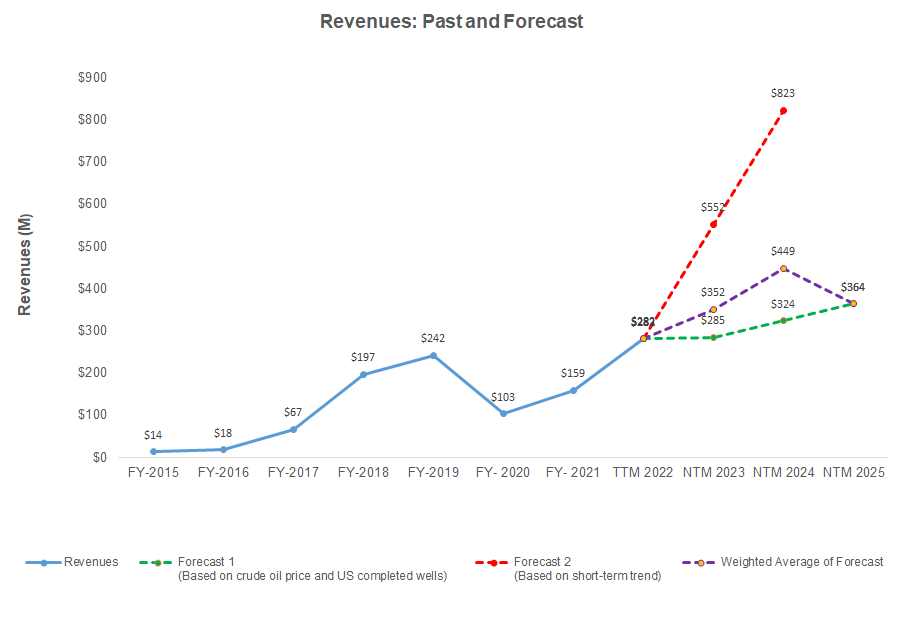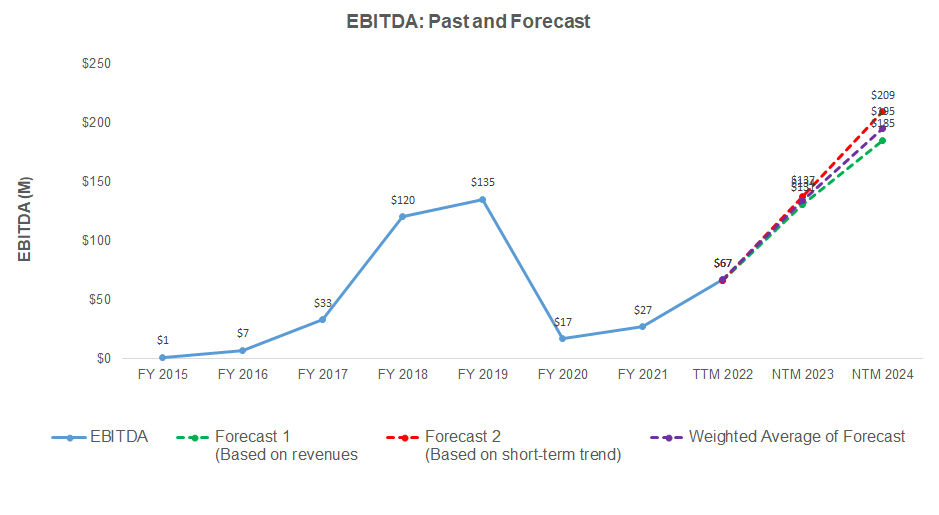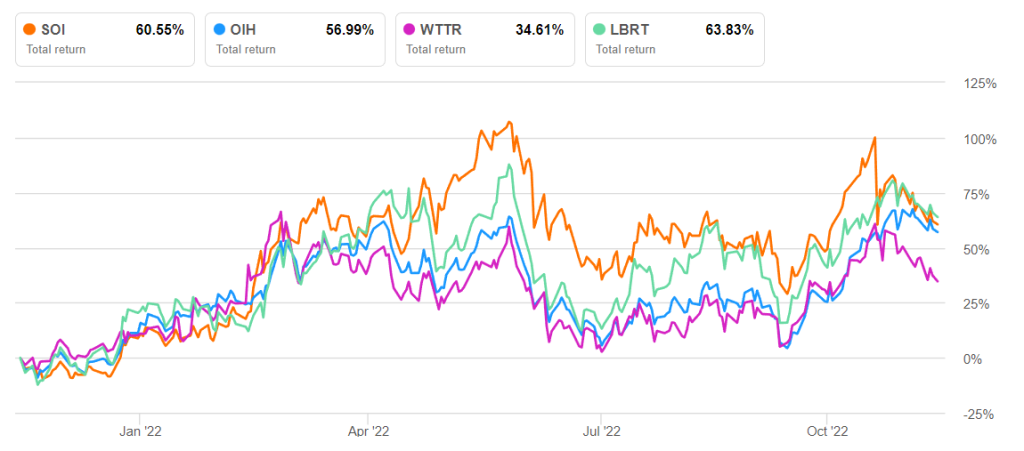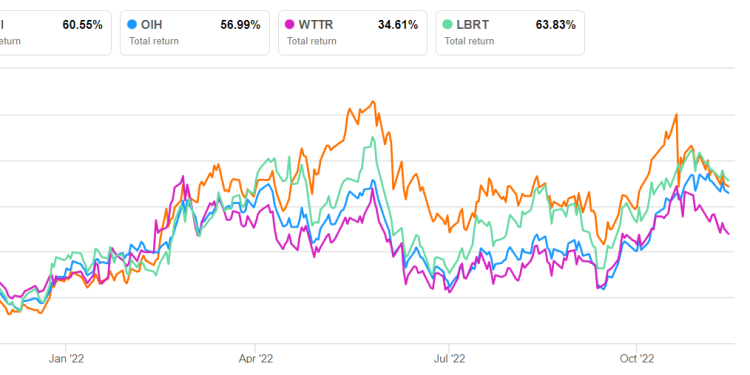- Our regression estimate suggests strong revenue growth in NTM 2023 and NTM 2024.
- According to the model, the EBITDA can double in NTM 2023, but growth may decelerate in NTM 2024.
- The relative valuation suggests the stock is overvalued at this level.
Part 1 of this article discussed Solaris Oilfield Infrastructure’s (SOI) outlook, performance, and financial condition. In this part, we will discuss more.
Linear Regression Based Forecast

Based on a regression equation between crude oil price, US completed well count, and SOI’s reported revenues for the past seven years and the previous four quarters, we expect revenues to increase by 25% in the next twelve months (or NTM) 2023 and further 28% in NTM 2024. However, the model suggests revenues can decline in NTM 2025.

Based on a simple regression model using the average forecast revenues, we expect the company’s EBITDA to double in NTM 2023. The model suggests the EBITDA growth rate can decelerate to 46% in NTM 2024.
Target Price And Relative Valuation

Returns potential using the past average multiple (11.2x) is higher (160% upside) than the return potential based on the forward multiple (5.0x). The sell-side analysts expect much lower returns (60% upside).

SOI’s forward EV-to-EBITDA multiple contraction versus the current EV/EBITDA is less steep than its peers, typically resulting in a lower EV/EBITDA multiple compared to peers. The company’s EV/EBITDA multiple (6.3x) is higher than its peers’ (PUMP, WTTR, and LBRT) average of 5.8x. So, the stock is overvalued at the current level.

The sell-side analysts’ target price for SOI is $14.8, which, at the current price, has a return potential of 60%. Out of five sell-side analysts rating SOI, three rated it a “buy” or a “strong buy,” two rated it a “hold,” and none a “sell.”
What’s The Take On SOI?

In Q4, Solaris’s number of fully utilized systems can increase by seven. Demand has largely remained intact, but the growth rate appears to have decelerated compared to the previous quarter. So, it focused on improving market share and achieved growth by deploying additional top-fill units. As a result, the operators’ trucking costs were reduced. It also helps drive a backlog of demand for the top-fill technology in the legacy shales and the relatively untapped areas like the Rockies. Following the steady drivers, its stock price performed in line with the VanEck Vectors Oil Services ETF (OIH) in the past year.
SOI has robust liquidity and no debt. However, the volatility in the job mix can be challenging for any efforts to improve last-mile profitability. Plus, continued system and startup costs and a reduction in last-mile activity can weigh on its operating profitability. Also, its free cash flows remained negative in 9M 2022. The stock is relatively overvalued versus its peers. Investors might want to “sell” it at the current level.













